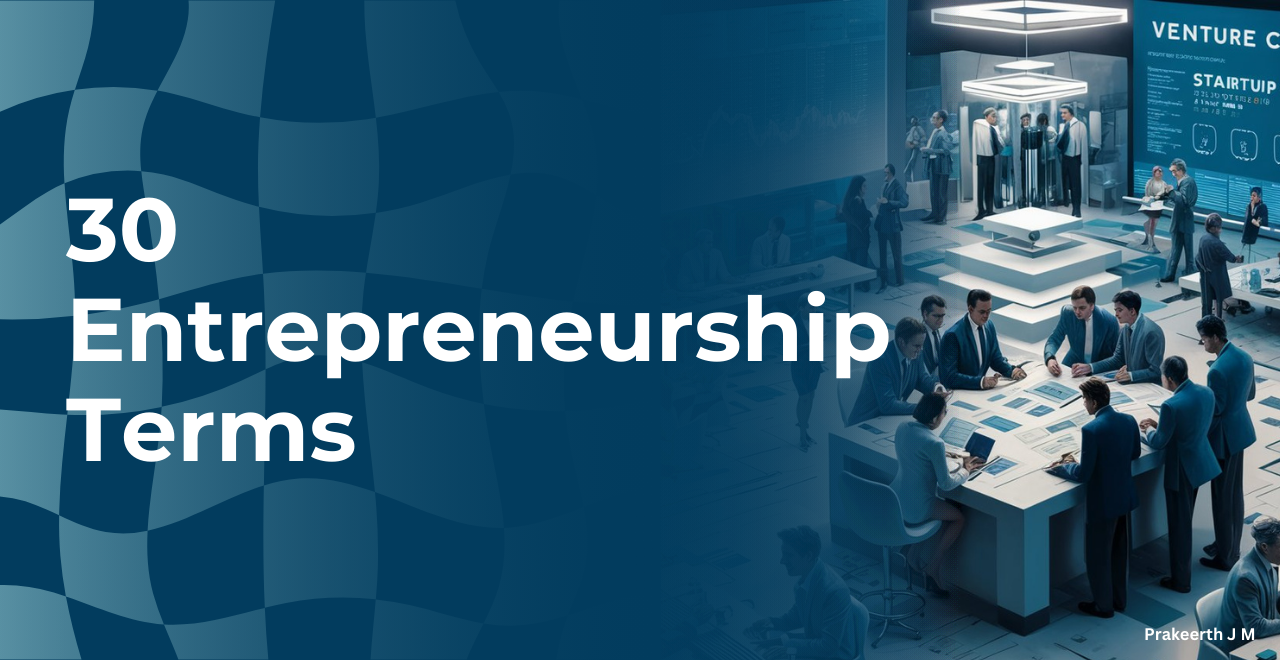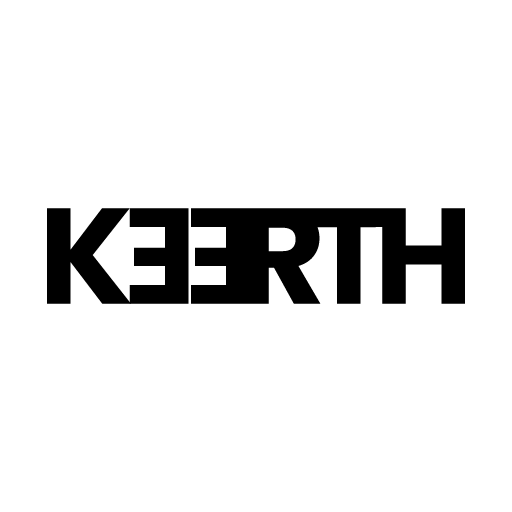
30 Entrepreneurship Terms
30- Business Essentials: A Comprehensive Guide for Entrepreneurs
This is a guide to 30 Entrepreneurship terms that every founder should know in simple terms.
1: Bootstrapping
Bootstrapping is the process of funding your business using your own savings or revenue without any external help. It’s about starting a business with your own money and managing resources efficiently to grow the company. Many successful businesses began their journey this way, highlighting the power of self-reliance and creativity.
2: Cash Flow
Cash flow refers to the total amount of money being transferred into and out of a business. It reflects the movement of money in and out of your business, helping you understand the financial health and liquidity. Managing cash flow effectively ensures that you can meet your obligations and invest in growth opportunities.
3: Revenue
Revenue is the total income generated from the sale of goods or services. It’s the money your business makes from selling products or services, serving as a key indicator of business performance and growth potential. Increasing revenue often involves improving sales strategies, marketing efforts, and customer satisfaction.
4: Profit Margin
Profit margin is the percentage of revenue that exceeds the costs of production. It’s essentially how much money you keep after paying for costs, reflecting the efficiency and profitability of your business operations. Higher profit margins indicate better financial health and operational efficiency.
5: Equity
Equity represents ownership interest in a company, usually in the form of stocks. It’s your share or stake in a company, which can grow in value as the company succeeds. Equity can be a significant part of personal wealth and is a key factor for investors and founders alike.
6: Return on Investment (ROI)
ROI is a measure of the profitability of an investment, showing how much profit you make from an investment. It’s a critical metric for assessing the effectiveness of your business investments, helping you make informed decisions to maximize returns.
7: Market Research
Market research involves gathering, analyzing, and interpreting information about a market. It’s about finding out what customers want and what competitors are doing, which helps in making informed business decisions and strategies. Effective market research can lead to better product development and marketing strategies.
8: Scalability
Scalability is the ability of a business to grow and manage increased demand. It reflects how easily your business can grow bigger without compromising performance or losing customers. Scalability is crucial for long-term success, allowing businesses to expand efficiently.
9: Business Plan
A business plan is a document outlining a company’s goals and the strategy to achieve them. It’s a detailed plan of what your business will do and how it will do it, serving as a roadmap for success. A solid business plan helps in securing funding, attracting partners, and guiding daily operations.
10: Networking
Networking involves building relationships with other professionals to advance your business. It’s about meeting people who can help your business grow, offering opportunities for partnerships, mentorship, and new ventures. Effective networking can open doors to invaluable resources and insights.
11: Angel Investor
An angel investor is an individual who provides capital for startups in exchange for ownership equity. These wealthy individuals invest in early-stage companies, helping them to grow and succeed. Angel investors not only provide funds but often bring valuable experience and mentorship.
12: Venture Capital
Venture capital is financing provided by investors to startups with high growth potential in exchange for equity. This money from investors helps you grow your business quickly, providing the necessary resources to scale and succeed in competitive markets.
13: Burn Rate
Burn rate is the rate at which a company spends its capital before generating positive cash flow. It reflects how fast your business spends money, which is crucial for managing resources and ensuring sustainability. Keeping burn rate in check is essential for long-term survival.
14: Pivot
Pivoting is a fundamental change in the direction of a business. It involves changing your business strategy to meet new goals, often in response to market feedback or new opportunities. Successful pivots can lead to new growth paths and revitalized business models.
15: Exit Strategy
An exit strategy is a planned approach to selling ownership in a company to investors or another company. It’s a plan for how you’ll leave or sell your business in the future, ensuring a smooth transition and maximizing value for shareholders.
16: Minimum Viable Product (MVP)
An MVP is the simplest version of a product that can be released to test a new business idea. It’s a basic version of your product to see if people like it, allowing you to gather feedback and make improvements before a full-scale launch.
17: Customer Acquisition Cost (CAC)
CAC is the cost associated with acquiring a new customer. It shows how much you spend to get a new customer, which is crucial for evaluating marketing effectiveness and overall business efficiency. Lowering CAC can significantly boost profitability.
18: Churn Rate
Churn rate is the percentage of customers who stop using a product over a certain period. It reflects how many customers leave your business over time, highlighting the importance of customer retention strategies to maintain growth and stability.
19: Freemium
Freemium is a pricing strategy where basic services are provided free of charge while more advanced features cost money. Offering basic services for free and charging for extras can attract a large user base and convert some into paying customers.
20: Disruption
Disruption involves innovation that significantly alters or replaces existing markets. It’s about changing an industry by introducing something new and better, which can create new market leaders and transform how businesses operate.
21: Business to Business (B2B)
B2B transactions are those between businesses. One business selling to another business typically involves larger deals and longer sales cycles, focusing on relationships and value creation.
22: Business to Consumer (B2C)
B2C transactions are those between businesses and individual consumers. A business selling directly to customers often involves shorter sales cycles and broader marketing efforts to reach a large audience.
23: Lean Startup
The Lean Startup methodology involves developing businesses by shortening the product development cycle and rapidly discovering if a proposed business model is viable. It’s about starting a business by quickly testing and learning from ideas to find the best path to success.
24: Unique Selling Proposition (USP)
A USP is a factor that differentiates a product from its competitors. It’s what makes your product special and different from others, helping to attract and retain customers by offering unique value.
25: Crowdfunding
Crowdfunding involves raising small amounts of money from a large number of people, typically via the internet. It’s about getting lots of people to give you small amounts of money online, which can collectively fund your business idea and create a community of supporters.
26: Key Performance Indicators (KPIs)
KPIs are metrics used to evaluate the success of a business. These important numbers show how well your business is doing, guiding decision-making and helping to track progress towards goals.
27: Brand Equity
Brand equity is the value of a brand based on consumer perception and recognition. It’s about how much your brand is worth because of its reputation, influencing customer loyalty and pricing power.
28: Market Penetration
Market penetration measures the extent to which a product is recognized and bought by customers in a particular market. It’s about how much of the market is buying your product, which is key to assessing market share and growth opportunities.
29: Value Proposition
A value proposition is a statement that explains how a product solves a problem and benefits the customer. It’s why customers should buy your product, highlighting the unique value it offers and how it meets their needs.
30: Seed Funding
Seed funding is the initial capital used to start a business, often provided by angel investors, venture capitalists, or family and friends. This early investment helps entrepreneurs turn their ideas into viable products and services, setting the foundation for future growth and success.


